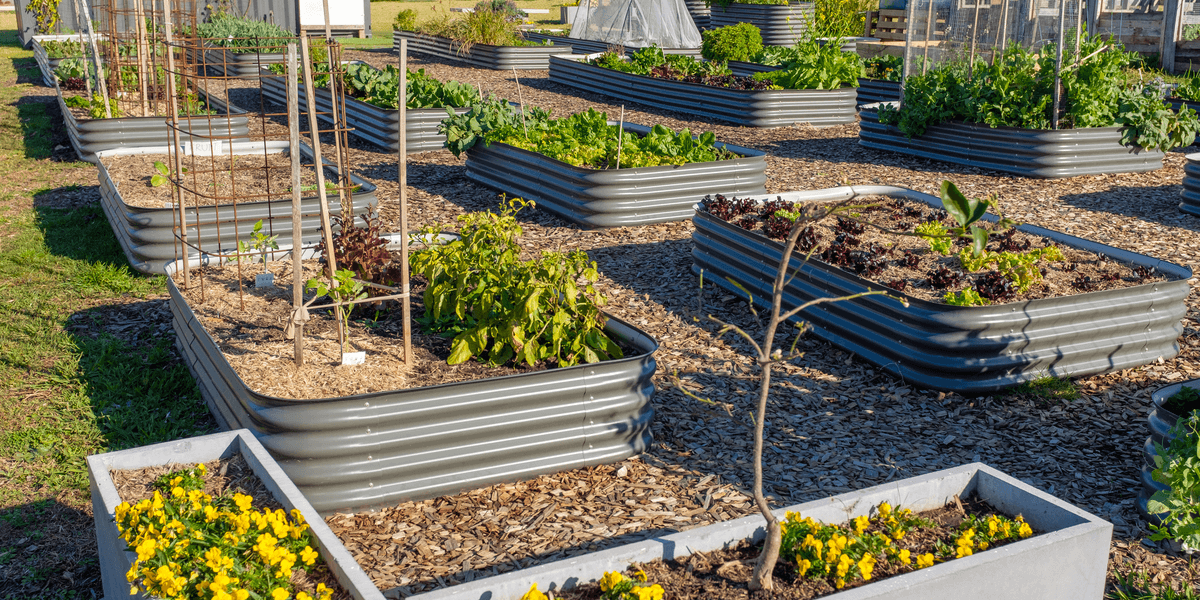
Have you ever wondered what it would be like to not have to make a trip to the store every time a recipe calls for an herb or vegetable? Or have you found out it was someone’s birthday and didn’t have time to head to the store to pick up a bouquet of flowers? Creating an at-home garden can put those worries to rest. By following these five steps to creating your own garden, you will soon have all the vegetables and flowers that you need—all right in your backyard!
1. Decide what to grow. Keeping your local climate and shade conditions in mind, the first step to creating your own at-home garden is to determine the type of plants that you want to grow. From flowers to vegetables and herbs, the possibilities can seem endless. Most garden centers provide information relating to plant care and conditions, so keep an eye out for descriptions while shopping. This will come in handy when selecting the location of your garden!
2. Choose the ideal location. Before planting your at-home garden, be sure to select a location outside based on lighting factors. Most plants require a few hours of direct sunlight a day, so planting in an area that receives full sun will be helpful. If your yard gets a lot of wind, it can also help to plant your garden near a structure to provide some cover. Selecting an area of land that is flat is also ideal when you begin building a garden bed.
3. Create a garden bed. Once you have a spot picked out, the next step to creating your at-home garden is to prepare the space for planting. If you do not have an above-ground or raised garden bed, the first step is to clear an area of vegetation. This area can be large or as small as you would like it to be, but it can be helpful to create a rough grid that your plants will grow into, so that you are not left with too much or too little space for them to grow. Once you have the plot size determined, begin removing grass and weeds from the entire area. Be sure to get all roots so they don’t resprout. When the vegetation is removed, spread a 1–2-inch layer of compost onto the growing area. Use a rotary tiller or a shovel to incorporate the compost in with your existing soil. If you need compost, The SMSC Organics Recycling Facility sells high-quality compost and compost blends that are now available to order online at smscorfcom/shop.
4. Plant your seeds or seedlings. Once your garden bed is prepared, it is now time to do some planting! If you choose to plant seeds, be sure to follow the instructions located on the packet. Then, simply dig your holes to the proper depth and plant your seeds. When planting seedlings, turn your pot over, holding the top of the pot with one hand and gently squeezing the root system out of the pot with your other hand. When the plant is out of the pot, simply create a hole that is about the same size as the root system and place the plant inside. Finally, cover the roots with soil and press down firmly. Once your seeds or seedlings are planted, it is important to sufficiently water the plant and the soil around it. Continuing to do so whenever the surface of the soil dries out will help you adequately care for your garden in the long run.
5. Care for your garden. While taking care of your garden can seem like a daunting task, especially if your days are often busy, it can be well worth the effort when flowers begin to bloom, and vegetables begin to make their way to your dinner table. It is important to regularly water and prune your garden and if you don’t know exactly when this should happen, try looking carefully at the soil and the plants themselves. Soil should often be watered twice per day if the garden is getting full sunlight, but if you notice the soil to be over or under watered, adjust accordingly. The soil should continuously be in the middle—not too wet, but not too dry. If you notice that a leaf is discolored or disformed, simply trim it off. The same goes for when there is simply too much vegetation in one area. When the leaves over congregate and become heavy, they start to lose sunlight and break down under their own weight. Pruning the plants regularly can help with this.
No matter what kind of garden you are looking to build, it is important to stay motivated during the entire process. Having your own garden truly is worth the time and energy that goes into creating and maintaining it. Happy gardening!


